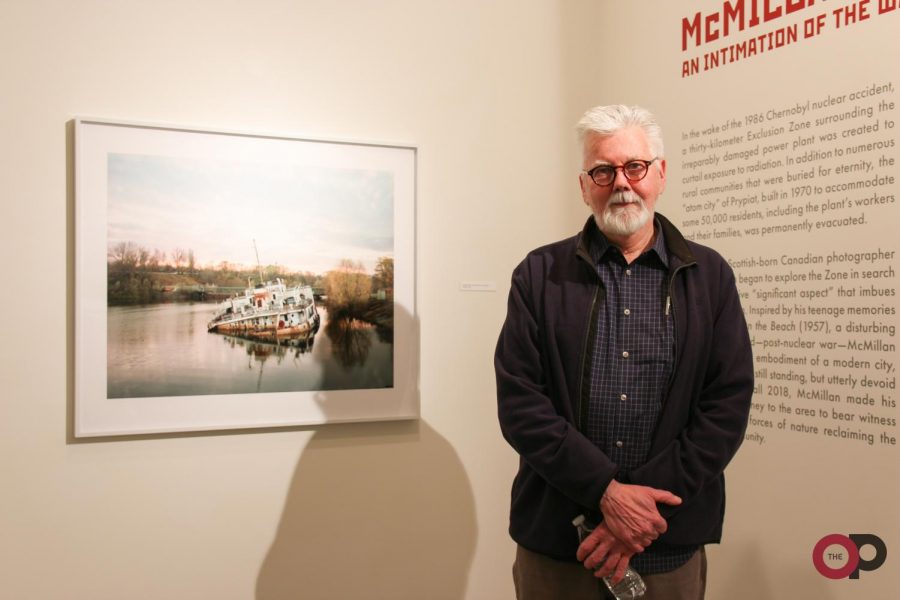‘McMillan’s Chernobyl’ photo gallery kicks off, runs through March 31
David McMillian felt drawn to the disaster zone of Pripyat, returning to it between 1994 and 2017.
If there is beauty in ruin, David McMillan can find it.
“McMillan’s Chernobyl: An Intimation of the Way the World Would End” is a collection of photos from Scottish-Canadian photographer McMillan’s multiple trips to the abandoned city of Pripyat, Ukraine.
Taken between 1994 and 2017 with a combination of digital and film techniques, “McMillan’s Chernobyl” captures the ruin and decay of the former Soviet city tragically suspended in time. As the years march on, nature reclaims more of Pripyat, creating a haunting subject for McMillan’s lens.
“I didn’t know what I would find,” McMillan said in his lecture at the Jan. 11 opening of the gallery. “I didn’t know what I’d be allowed to look at, even, because I wasn’t sure what areas would be off-limits, but I was able to go anywhere I wanted.”
McMillan’s photos capture a wide range of structures, but he consistently comes back to Pripyat’s abandoned kindergartens. While he says that this is because of all the items left behind in them — only the heaviest of items were left as apartments were evacuated — there is a more personal reason as well.
“When I started going, my own children were older than kindergarten, but they were still young-ish, and I think it was very touching to see [the kindergartens], knowing that so many children were [affected],” McMillan said.
Some people may find it in poor taste to use such a tragic setting and event for the basis of art. McMillan is aware of this concern.
“One can talk about the tragedy of the accident, and I don’t mean to diminish that by any means,” McMillan said. “But understand that I’m there to make photographs that are interesting to me as pictures, and things like [the details within a shot, such as drywall particles on a decaying gymnasium floor] are what animate the photographs.”
The photo gallery, located in Wilson Hall across from the Meadow Brook Theater, is only one part in a series of events based around the Chernobyl accident; an eight-part film series starting Jan. 16, a curator’s talk on Jan. 30, a community forum on Feb. 10, a lecture by Alan Weisman on March 14 and a symposium on March 15 are still to come. All events are open to the public, but the symposium is limited to the first 100 people to register.
According to curator and professor of art history Claude Baillargeon, McMillan was compelled to go to the Chernobyl exclusion zone after reading Weisman’s story “Journey Through a Doomed Land” in the Aug. 1994 edition of “Harper’s” and Nevil Shute’s story “On the Beach.”
“Intrigued by this renewed awareness of the tragedy and the personal recollection it triggered, McMillan felt the urge to see for himself what Weisman described as ‘the intractable matter of Chernobyl,’” Baillargeon said.
Over the years McMillan has found himself returning to the doomed land, though it is not certain if his most recent visit will be his last.
“I’ve thought of [going back]… but you kind of wonder if it’s a lack of imagination,” McMillan said. “In my case, I keep coming back because I can’t come up with something else, so I’d like to find something else.”
“McMillan’s Chernobyl” will be on display at the Oakland University Art Gallery through March 31. To register for the March 15 symposium, go to the Office of the Provost web page.









